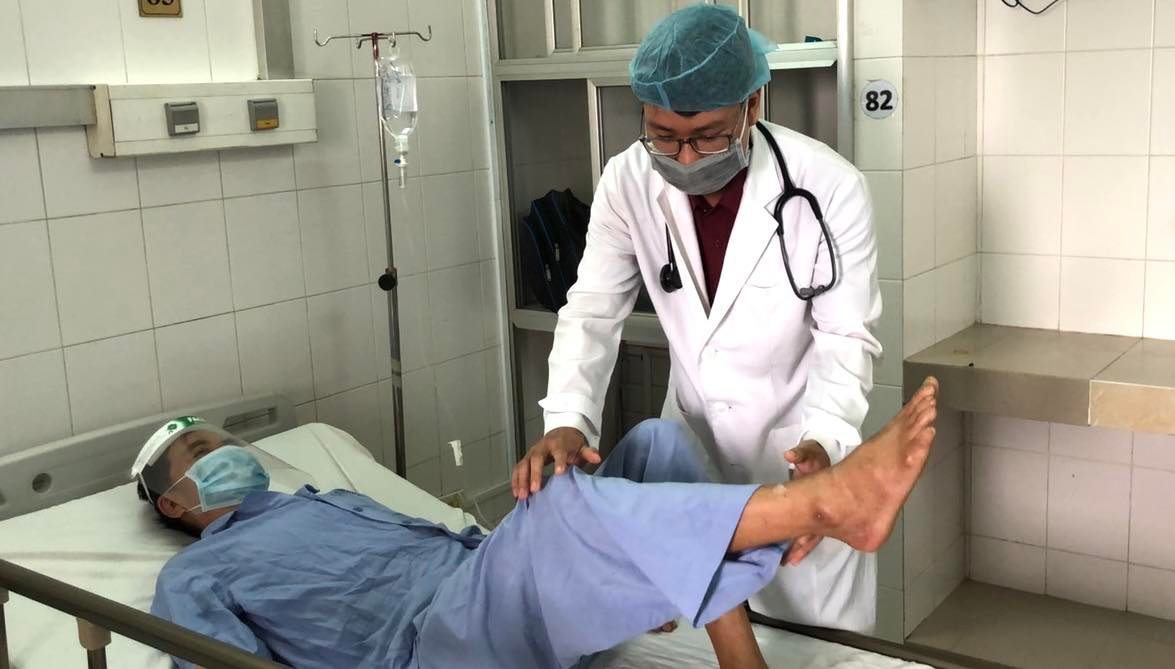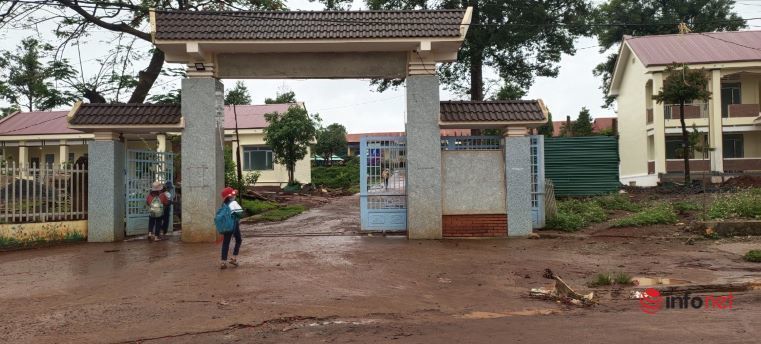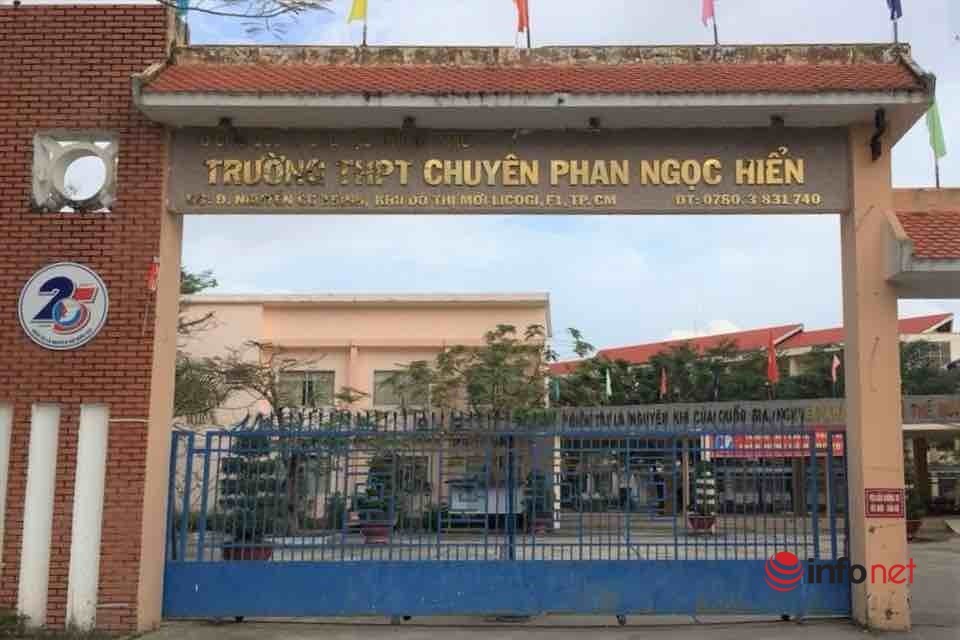The patient who had both a stroke and a heart attack miraculously escaped death
Doctors of Can Tho Central General Hospital have coordinated cerebral vascular intervention and coronary intervention to save the patient’s life at the same time, having an acute cerebral stroke and a very serious acute myocardial infarction.
Patient NVB, born in 1950, address in Kien Giang, was transferred to Can Tho Central General Hospital at 02:42 on April 14, 2022 with low blood pressure and paralysis of 1⁄2 people. yes, tired, struggling, sweaty, cold hands and feet. About 5 hours earlier, the patient suddenly had left chest pain, sweating, and hemiplegia, so his family took him to a local hospital for emergency treatment and then transferred for treatment.
The patient was intensively resuscitated by Emergency Department doctors, consulted with specialists with the diagnosis: acute cerebral infarction, monitoring of intracranial large vessel occlusion, acute myocardial infarction with ST segment elevation below the second hour. 05 hemodynamically stable.
The team decided to intervene in the anterior cerebral circuit due to BSCK1. Tran Cong Khanh – Deputy Head of the Department of Diagnostic Imaging, the patient’s results showed that the patient had an internal carotid artery occlusion (T), the doctors used a tool to remove many thrombi, after 40 minutes of intervention, the patient was completely revascularized. internal carotid artery (T).
 |
| The patient is examined by a doctor. |
Next, the emergency coronary angiography and intervention team, BSCK1. Nguyen Van Nhiem, Dr. Duong Hoang Man performed, the results showed complete occlusion of RCAII (right middle coronary artery) and thrombus, doctors successfully intervened the lesion with drug-eluting stent, the result was complete coronary revascularization after during intervention, coronary angiography checked no dissection, no thrombosis, no residual stenosis. The intervention time was 20 minutes.
According to BSCK2 Pham Thanh Phong – Deputy Director of the Hospital, Director of the Cardiovascular Center: Myocardial infarction and cerebral infarction are both emergency conditions that need to be diagnosed and treated promptly. Scientists have proven that myocardial infarction increases the risk of cerebral infarction and vice versa. However, concurrent myocardial infarction and cerebral infarction in a patient is very rare, estimated to occur in only 0.009% of the population.
Dr. Phong said that concurrent myocardial infarction can be diagnosed by the presence of an acute neurological deficit (suggesting cerebral infarction) accompanied by angina associated with electrocardiographic changes or increased cardiac enzymes (suggesting myocardial infarction). There are many possible causes of concurrent heart-brain infarction. Atrial fibrillation is reported as one of the most common causes.
People who smoke are also at increased risk. Compared with non-smokers, smokers have a 60% increased risk of atherosclerotic coronary artery disease, a 50% increase in cardiovascular mortality. Up to 67.5% rate of patients with infarction due to heavy smoking.
Smoking causes increased levels of carbon monoxide in the blood, leading to destruction of coronary endothelial cells, increased platelet aggregation, and increased risk of thromboembolism. Nicotine contained in tobacco ingredients acts to accelerate the process of forming atherosclerosis.
Because concurrent myocardial infarction is rare, there are currently no specific treatment guidelines for this particular condition. Treating one condition first will delay treatment for the other, while both are emergencies. The American Heart Association and the American Stroke Association recommend that a dose of fibrinolytic therapy be considered for the treatment of ischemic stroke followed by percutaneous coronary revascularization.
Doctors recommend that acute myocardial infarction and cerebral stroke are both diseases with dangerous complications. Patients are at high risk of death if not treated promptly. When noticing that a loved one has symptoms of chest pain, shortness of breath, etc. (symptoms of acute myocardial infarction), or mouth distortion, difficulty walking, weakness, language and cognitive disorders, etc. (a typical manifestation of a brain stroke) it is necessary to quickly bring the patient to the nearest neurological and cardiovascular medical facility for timely intervention and emergency.
To prevent disease, in addition to regular check-ups, doctors recommend that smoking cessation plays an important role in preventing the progression of cardiovascular diseases. Research shows that, for people with coronary artery disease, smoking cessation reduces the risk of cardiovascular complications by 36% and the risk of premature death by 50%. In people with myocardial infarction, smoking cessation reduces the risk of death by 40%, the risk by 30%. After 1 year of quitting smoking, the risk of cardiovascular disease is halved. After 15 years, the risk of disease will be the same as that of a person who has never smoked.
K.Chi
at Blogtuan.info – Source: infonet.vietnamnet.vn – Read the original article here



